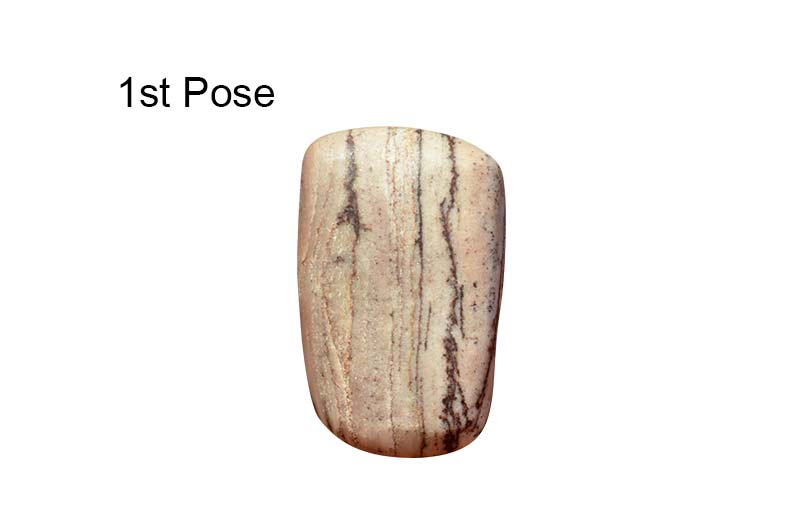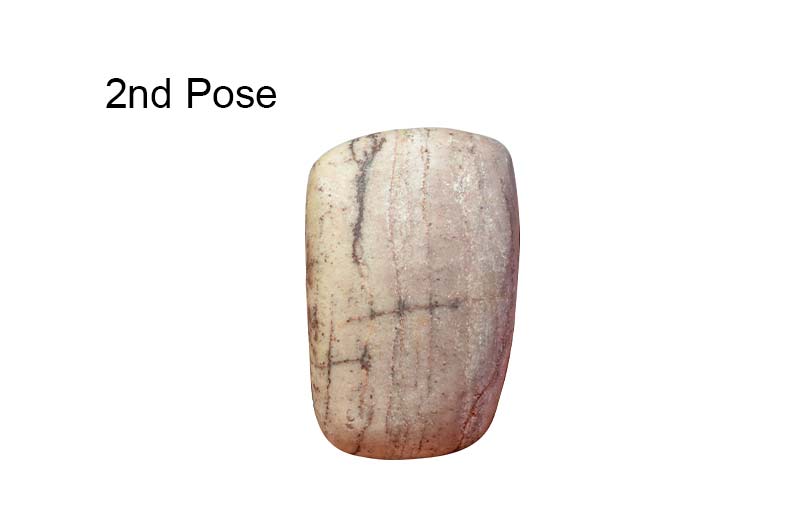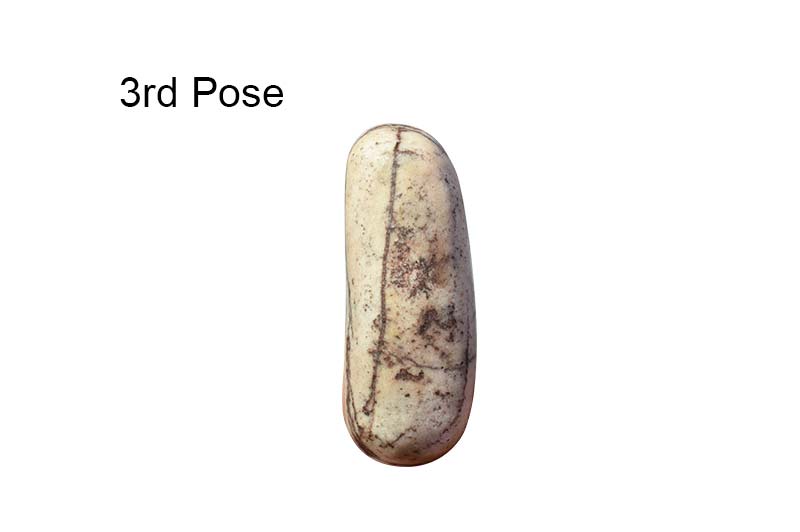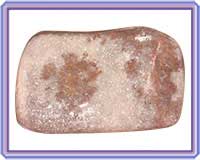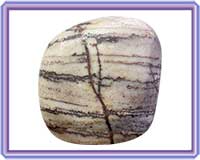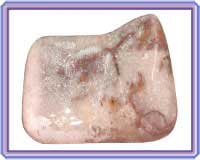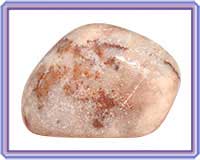The Significance of the Auspicious Giri Govardhan Shila
In the heart of the sacred land of Vrindavan, India, lies an emblem of divine significance - the Giri Govardhan Shila. This revered stone holds a place of deep importance in Hindu mythology and spirituality, symbolizing the eternal bond between Lord Krishna and the nature that surrounds him. Its history and symbolism make it a revered object of devotion and meditation for millions. According to the Brahma Purana, worshipping Giri Govardhan Shila and Shaligrama Shilas bestows emancipation, opulence, equal reverence to Lord Indra, religious thought, economic development, and worldly comforts to the devotee. All kinds of pleasures, freedom from the fear of birth and death, fame and the continuation of one family, kingship, lordship, sons, grandsons, wealth, power, tranquilly, extreme protection and Vaikuntha Dhama.Origin and Mythology of Giri Govardhan Shila
The story of the Giri Govardhan Shila is rooted in Hindu scriptures, primarily in the Bhagavata Purana. According to the myth, the inhabitants of Vrindavan once decided to perform a grand sacrifice to please Lord Indra, the god of rain. However, young Krishna advised them to worship Govardhan Hill instead, stating that it provided them with all their sustenance. Ignoring Indras wrath, the villagers followed Krishnas advice and worshiped the hill. In response, Lord Indra sent torrential rains to flood Vrindavan. In a miraculous act, Krishna lifted the entire Govardhan Hill on his little finger to provide shelter to his devotees and livestock for seven days until Indras fury subsided. This event highlights the theme of devotion to God and the interconnectedness of nature.Symbolism and Significance of Govardhan Shila
The Giri Govardhan Shila, often represented as a small stone or a mound, symbolizes Krishnas protection, his close relationship with nature, and the power of faith. Devotees believe that worshiping this Shila can bestow blessings related to health, wealth, and spiritual growth. The act of circumambulating the Shila is seen as an expression of gratitude to Lord Krishna for his eternal grace. The Govardhan Shila also represents the harmony between human beings and nature. It serves as a reminder of the importance of preserving and respecting the environment. The story of Govardhan Hill underscores the belief that nature is to be revered and cared for, rather than exploited for personal gain.Worship and Rituals of Giri Govardhan
Devotees perform various rituals and offerings before the Giri Govardhan Shila. The act of offering water, flowers, incense, and lamps is believed to purify the soul and strengthen the bond between the worshipper and Lord Krishna. Circumambulating the Shila while chanting mantras is considered a powerful form of meditation that deepens spiritual connection.Importance of Govardhan Shila
The Giri Govardhan Shila embodies the essence of devotion, protection, and the sanctity of nature in Hinduism. Its significance goes beyond a mere physical stone; it stands as a testament to the eternal bond between Lord Krishna and his devotees. The story of the Shila teaches us the value of faith, humility, and the delicate balance between humanity and the environment. As devotees continue to gather around this sacred emblem, they are reminded of the timeless message it carries the power of devotion and the profound connection between the divine and the earthly.Identifying Symbols of Giri Govardhan Shila
Sudarshana is a Dvaraka-Shila with one prominent Wheel (Chakra), Lakshmi-Narayana is a Shila with two Chakras, and Trivikrama is a Shila with three Chakras, according to the Prahlada Samhita. Janardana is the Shila with four Chakras, Vasudeva has five Chakras, Pradyumna has six Chakras, and Baladeva has seven Chakras. Purushottama is the one with eight Chakras, Navavyuha has nine Chakras, Dashmurti has 10 Chakras, and Aniruddha has eleven Chakras. Dvadasatmaka is a Dwaraka-Shila with twelve Chakras, while Ananta is a Dwaraka-Shila with more than twelve Chakras. The type of Shila is also determined by the shape of the Dwarka Shila.Benefits of Different Types of Giri Govardhan Shila
The Kapila-Pancaratra describes the advantages of worshipping several sorts of Giri Govardhan Shila. Sudarsana, a lovely shila with one Chakra on it, is said to grant liberation. The two-chakra Lakshmi-Narayana Dvaraka-Shila provides opulence and emancipation, whereas the three-chakra Acyuta-Shila provides esteem equal to Lord Indra. With four Chakras, the Shila known as Chaturbhuja gives religious thinking, economic development, happiness, and release. A Vasudeva-Shila with five Chakras removes the fear of birth and death, whereas a Pradyumna-Shila with six Chakras bestows beauty and wealth. The Balabhadra-Shila, which has seven Chakras, bestows fame and ensures the continuation of one lineage, but the Purushottama-Shila, which has eight Chakras, bestows all kinds of blessings. A Narasimhadeva-Shila has nine Chakras and delivers the maximum blessings, whereas a Dashavatara Dwaraka-Shila has 10 Chakras and grants monarchy.An Aniruddha-Shila, with eleven Chakras, bestows glory and kingship, while a Dwadasatmaka-Shila, with twelve Chakras, bestows emancipation and bliss. The white Shila, according to the Kapila-Pancaratra, bestows sons, grandsons, money, power, and all kinds of bliss, hence this variety of Shila should be cherished. A Giri Govardhan Shila with consistent Chakras offers happiness, a twelve or more Chakra Shila is particularly auspicious, and round and square shilas bring happiness, according to Garga and Galava Rishis. Worshiping Shaligrama-Shila with Dwaraka-Shila-According to the Brahma Purana, wherever Shalagrama-Shila and Dvaraka-Shila are worshipped together, salvation or mukti is present. In the Skanda Purana, Brahma and Narada have a discourse in which Brahma says, "Munishvara, o Munishvara! Every level of opulence increases inexorably wherever Dwaraka-Shila sits in front of the Shalagrama-Shila." It is written somewhere that one who worships Dvaraka-Shila and twelve Shalagrama-Shila on a daily basis will be respected even in Vaikuntha-dhama. The worship of the Dvararvati-stone (obtained from the Gomati river in Dvaraka) coupled with the salagrama-stone is regarded meritorious in the Vaishnava tradition, because the latter variety of stones are particular forms assumed by Krishna himself.
 Google has chosen Shaligram Shala ( shaligram.com) as the world's first 5 star
Google has chosen Shaligram Shala ( shaligram.com) as the world's first 5 star  rated Rudraksha supplying Company
rated Rudraksha supplying Company 


